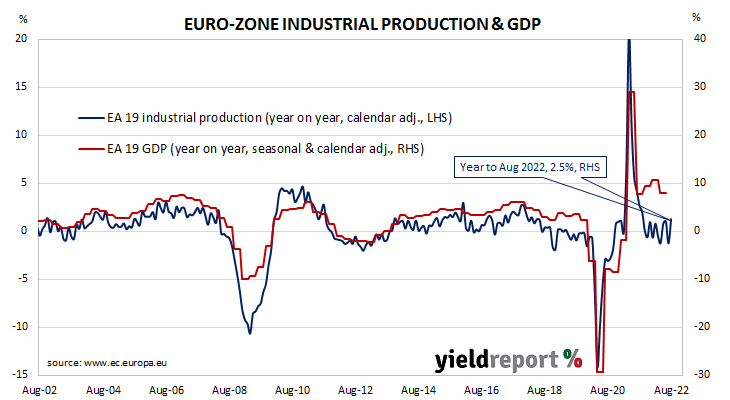Summary: Euro-zone industrial production up 1.5% in August, greater than expected; annual growth rate swings from -2.5% to +2.5%; rebound “may not last”; German, French 10-year yields increase slightly; expansion in three of euro-zone’s four largest economies.
Following a recession in 2009/2010 and the debt-crisis which flowed from it, euro-zone industrial production recovered and then reached a peak four years later in 2016. Growth rates then fluctuated for two years before beginning a steady and persistent slowdown from the start of 2018. That decline was transformed into a plunge in March and April of 2020 which then took over a year to claw back. Production levels in more-recent months have generally stagnated.
According to the latest figures released by Eurostat, euro-zone industrial production expanded by 1.5% in August on a seasonally-adjusted and calendar-adjusted basis. The rise was greater than the 1.3% increase which had been generally expected and in contrast with July’s 2.3% fall after revisions. The calendar-adjusted growth rate on an annual basis swung from July’s revised rate of -2.5% to +2.5%.
“The rebound…may not last, as energy-intense factories are constrained by the energy shortage and high input prices,” said ANZ economist Madeline Dunk.
German and French sovereign bond yields moved slightly higher on the day. By the close of business, the German 10-year bund yield had inched up 1bp to 2.32% while the French 10-year OAT yield finished 2bps higher at 2.92%.
Industrial production expanded in three of the euro-zone’s four largest economies but not in the largest of them. Germany’s production shrank by 0.5% over the month while the growth figures for France, Spain and Italy were +2.5%, +5.7% and +2.3% respectively.


